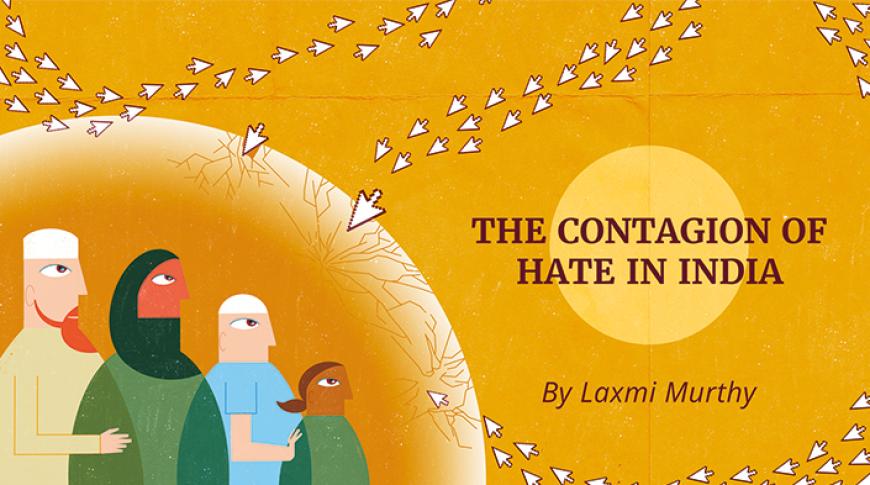
What is the “corona jihad”? In the time of a pandemic, how has hate speech made matters worse for the Muslim population in India? How do we curb hate speech online? These are just some of the questions that the report The Contagion of Hate in India aims to answer. Authored by Laxmi Murthy, a journalist based in Bangalore, India, the paper attempts to understand the phenomenon of hate speech and how it can lead to violence against its targets. Setting the context in India, the paper also examines the interconnectivity between hate speech online, Islamophobia and the physical attacks carried out against the Muslim population in the country.
While there is no legal definition of “hate speech” in international law, the United Nations understands hate speech as “any kind of communication in speech, writing or behaviour, that attacks or uses pejorative or discriminatory language with reference to a person or a group on the basis of who they are, including religion, ethnicity, nationality, race, colour, descent, gender or other identity factor.” In light of this, the report outlines the rampant spread of hate speech against Muslims in India on various platforms, including Facebook, Twitter and WhatsApp, which can take the form of different media such as videos, images and messages.
Most of the content is presented with an inaccurate context through misrepresentation or by morphing existing footage and speeches. The creation of fake content to promote hate speech is also common. The report notes that despite this, social media companies have done little to curb the rapid spread of hate speech or misinformation targeting Muslims and other religious minorities. The proliferation of hate speech against Muslims has led to incidents of aggression, arson and violence in different parts of the country.
Aside from physical attacks, hate speech targeted against Muslims has also incorrectly painted them as spreaders of the coronavirus. The report highlights a gathering of 3,500 members of the Tablighi Jamaat, an Islamic movement, in New Delhi in March 2020 and a large number of those attending testing positive for the coronavirus subsequently, which unleashed a barrage of anti-Muslim sentiments, violence, boycotts and accusations of Muslims being deliberate spreaders of the virus, including from members of the governing political party in India. The report finds that even before the Tablighi Jamaat event, however, the Indian media in particular have had a significant role to play in peddling fake news about Muslims and whipping up anti-Muslim sentiment, with no repercussions from professional media regulatory bodies or the government.
As the report notes, the lack of a legal definition for hate speech in Indian law, and the vague language used in criminal law provisions prohibiting the spread of hatred, leaving them open to misuse and overreach, have also been impediments in curbing hate speech in the country. Finally, the report states that the pushback against hate speech should take several forms. On top of a robust legal framework criminalising hate speech, the government can also ban content, use reporting mechanisms and encourage citizens to report and flag hate speech and fake news.
Similarly, the consequences of hate speech, including physical violence, should be dealt with firmly with relevant laws applied consistently. Lastly, hate speech is not a matter of the application of laws only. Courts and public discourse should always examine their definitions of hate speech and offensive speech. Societies should also ask themselves for ways to build a culture of public discourse and to create spaces for diverse and dissenting voices. A society should promote freedom of expression and the right to free speech without stifling or endangering other people’s freedoms and human rights.
This report was produced with the support of a grant given under the APC Challenge project.
Access the full report here.